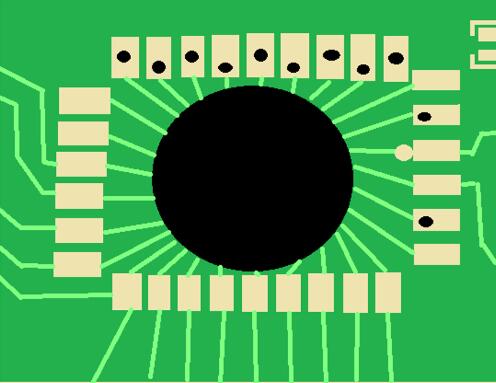How is the Chip-on-Board Process?
Time:2022-03-10
Views:1657
On board chip (CoB) is simply a specialized process for connecting integrated circuit chips to any given substrate or board.

With the development of various technological devices, the size and shape of ICs and substrates vary depending on the product.
We must use advanced electronic assembly technologies such as CoB to make these products lifelike.

With the development of various technological devices, the size and shape of ICs and substrates vary depending on the product.
We must use advanced electronic assembly technologies such as CoB to make these products lifelike.
Although the process of designing and assembling micro and powerful chips is difficult, we cannot move forward without them.
With Qualcomm announcing that its new Snapdragon Ride system on chip (SoC) processing core provides a series of autonomous
vehicle support, the industry expects manufacturers to successfully integrate these chips. On board chips are one of the advanced
electronic assembly processes we will use, as devices continue to need to provide more functionality in smaller and smaller formats.
With Qualcomm announcing that its new Snapdragon Ride system on chip (SoC) processing core provides a series of autonomous
vehicle support, the industry expects manufacturers to successfully integrate these chips. On board chips are one of the advanced
electronic assembly processes we will use, as devices continue to need to provide more functionality in smaller and smaller formats.
Indeed, considering the pace of chip manufacturers releasing their next smallest transistor node chip, Gordon Moore‘s law of stuffing
more components into integrated circuits seems to be slowing down. Intel encountered some slowdown when approaching single digit
nanoscale transistor nodes. Now, due to a global supply chain shortage of almost every type of component, manufacturers are facing
greater delays.
more components into integrated circuits seems to be slowing down. Intel encountered some slowdown when approaching single digit
nanoscale transistor nodes. Now, due to a global supply chain shortage of almost every type of component, manufacturers are facing
greater delays.
However, researchers are already studying different methods to perform typical switching or routing tasks for transistors. Essentially,
researchers are seeking to use nanoscale and subnanoscale transistor like devices to control this signal routing.
researchers are seeking to use nanoscale and subnanoscale transistor like devices to control this signal routing.
Research has shown that the use of specialized materials such as organic transistors, ferroelectric transistors, and even quantum transistors
can yield promising results, requiring completely different hardware and disrupting the electronic landscape we know today. With the continuous
development of these new transistor like devices, it is our advanced assembly team that can integrate them on a large scale into products worldwide.
can yield promising results, requiring completely different hardware and disrupting the electronic landscape we know today. With the continuous
development of these new transistor like devices, it is our advanced assembly team that can integrate them on a large scale into products worldwide.
Through miniaturization, researchers hope to solve some of the biggest problems faced by humans. The brilliant new breakthroughs from the most
respected research institutions in the world are expected to lead to a longer, healthier life and cleaner energy, which will provide power for everything
from autonomous vehicle to spacecraft and between. But without advanced electronic assembly, this research will not be available to consumers.
respected research institutions in the world are expected to lead to a longer, healthier life and cleaner energy, which will provide power for everything
from autonomous vehicle to spacecraft and between. But without advanced electronic assembly, this research will not be available to consumers.
Advanced electronic assembly will bring research into daily life, finding methods for large-scale manufacturing, minimizing costs, and utilizing a wealth
of engineering expertise. Whether you are a startup or a Fortune 500 technology leader, if you are creating the next disruptive electronic device, an
advanced electronic assembly team can help you seamlessly transition from prototype to production, no matter how small or complex electronic products
are.
of engineering expertise. Whether you are a startup or a Fortune 500 technology leader, if you are creating the next disruptive electronic device, an
advanced electronic assembly team can help you seamlessly transition from prototype to production, no matter how small or complex electronic products
are.

